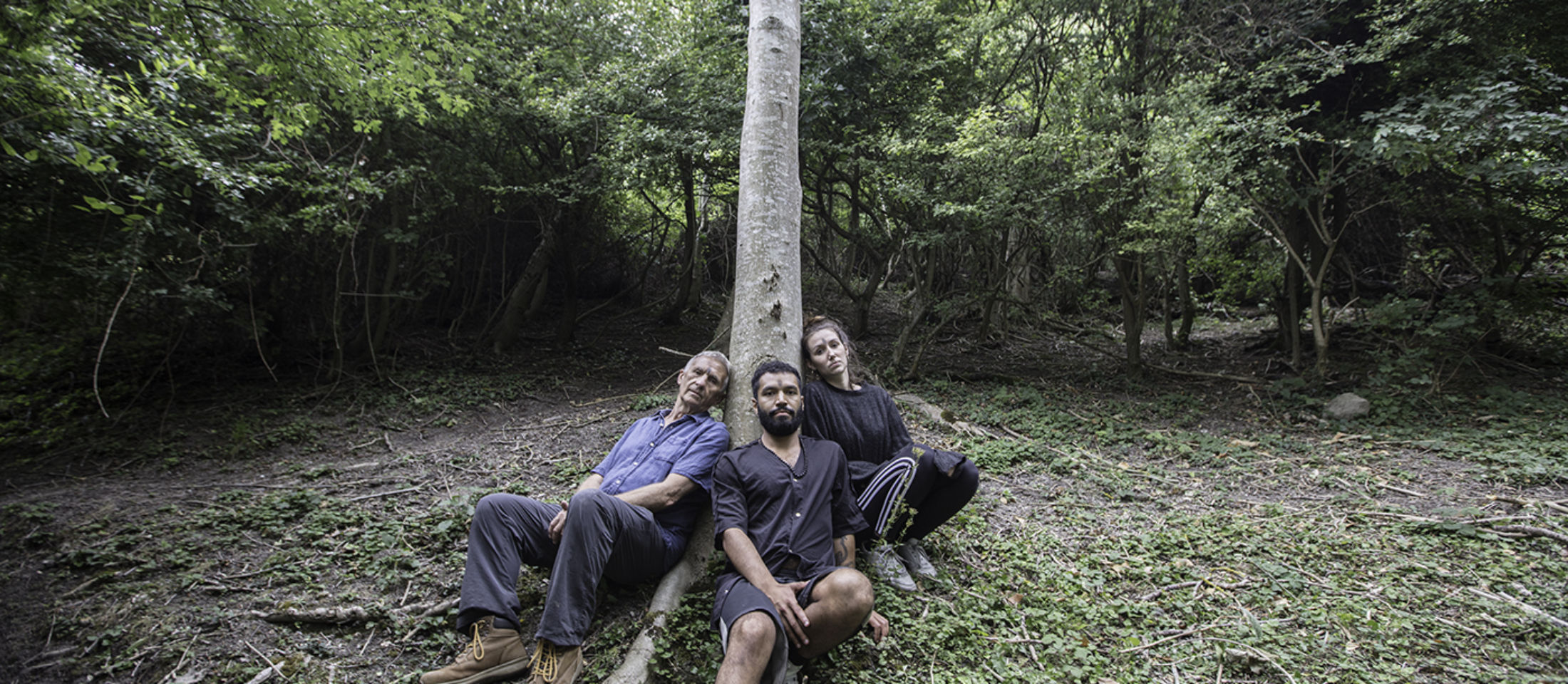
Holy Trinity, (A Photographic Exchange). Photo: Maureen Jordan

Holy Trinity, (A Photographic Exchange). Photo: Maureen Jordan
“Remember that you are dust, and to dust you shall return”.
In 2018 took part in a weekend workshop run by the performance-photographer Manuel Vason as part of The Ash Project which is both a celebration of ash trees and memorial to the devastating effects of ash dieback on the most common tree in the Kent Downs.
Manuel is a collaborative artist so in the ancient woodland near Folkestone he gave each of us time to explore our own take as artists on the subject. I am by no means an ‘environmental’ artist and would not have been able to identify an Ash tree before the workshop. My work is rooted in cultural identity and place, it is not about Northern Ireland where I was born, but it is of it.
I use found objects and recycled materials, responding to a specific site, looking for the resonances with my internal landscape. I sometimes reference religious iconography suggesting contrast: the sacred and profane, light and dark, valued and discarded. I am interested in what makes a place ‘sacred’ and in ‘contested territory’. Thinking about what might be my take on this subject was an interesting challenge. Then I remembered the ‘Ash Wednesday’ religious ritual of my childhood when ashes (often from the palm branches used on Palm Sunday) are ceremonially placed on the heads of Christians. For Catholics in Northern Ireland this literally marked you out as a member of a particular tribe.
The 1969 revision of the Roman Rite inserted this solemn ceremony into the Mass, but also explicitly envisaged a similar ceremony outside of Mass. While the ritual would normally be carried out within a church building, the simple rite could appropriately be used almost anywhere. While only a priest or deacon may bless the ashes, laypeople may do the placing of the ashes on a person’s head with little or no ceremony.
Also, the Catholic Church does not limit distribution of blessed ashes to within church buildings and has suggested the holding of celebrations in shopping centres, nursing homes, and factories. Such celebrations presume preparation of an appropriate area and include readings from Scripture.
I found this idea of Ashes-to-Go intriguing. My initial photographs of the artist group with ashed foreheads was experimental, tentative and looks somewhat Pagan. However, there is so much more scope with this idea that I intend to pursue it further, possibly looking at carving ‘vessels’ (from Ash wood) to contain ashes.